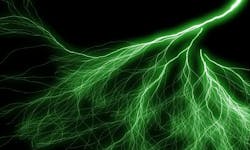Laser pulses reveal optimum conditions for room-temperature superconductivity
An international collaboration, led by the scientists of Italy’s International School for Advanced Studies (SISSA; Trieste, Italy), Università Cattolica di Brescia, and Politecnico di Milano, used suitably tailored laser pulses to snap the electronic interactions in a compound containing copper, oxygen and bismuth, identifying the room-temperature conditions for which electrons do not repel each other--an essential prerequisite for current to flow without resistance in a process called superconductivity. This condensed matter physics research, detailed in Nature, opens new perspectives for the development of superconducting materials with applications in electronics, diagnostics, and transport.
RELATED ARTICLE: Superconducting NbN detector operates in the visible and near-infrared
Using sophisticated laser techniques that make it possible to investigate the so-called non-equilibrium regime, the scientists found a very innovative way to understand the properties of a special class of materials. The SISSA team dealt with the theoretical aspects of the research while the I-LAMP labs of Università Cattolica del Sacro Cuore (Brescia) and Politecnico di Milano coordinated the experimental side.
"One of the greatest obstacles to exploit superconductivity in everyday technology is that the most promising superconductors tend to turn into insulators at high temperatures and for low doping concentrations," the scientists explained. "This is because the electrons tend to repel each other instead of pairing up and moving in the direction of the current flow." To study this phenomenon, the researchers focused on a specific superconductor, which has highly complex physical and chemical properties, being composed of four different types of atoms including copper and oxygen.
"Using a laser pulse, we drove the material out of its equilibrium state. A second, ultra-short pulse then enabled us to disentangle the components that characterise the interaction between the electrons while the material was returning to equilibrium. Metaphorically, it was like taking a series of snap shots of the different properties of that material at different moments."
Through this approach, the scientists found that "in this material, the repulsion between the electrons, and therefore their insulating properties, disappears even at room temperature. It is a very interesting observation as this is the essential prerequisite for turning a material into a superconductor." What is the next step in achieving this? "We will be able to take this material as a starting point and change its chemical composition, for example," the researchers explained.
Having discovered that the prerequisites for producing a superconductor at room temperature exist, scientists now have new tools at their disposal for finding the correct recipe: by changing a few ingredients, they might not be too far away from the right formula
Beyond superconducting rails in train travel, in diagnostics applications it would be possible to generate very large magnetic fields in extremely small spaces, thus making it possible to perform high-accuracy magnetic resonance imaging on a very small scale. In the field of energy transport or microelectronics, high-temperature superconductors would provide extremely high efficiency and, at the same time, considerable energy savings.
SOURCE: SISSA; https://www.sissa.it/sites/default/files/images/documents/communication_area/comunicati_stampa/Superconductor%20ENGLISH_1.pdf

Gail Overton | Senior Editor (2004-2020)
Gail has more than 30 years of engineering, marketing, product management, and editorial experience in the photonics and optical communications industry. Before joining the staff at Laser Focus World in 2004, she held many product management and product marketing roles in the fiber-optics industry, most notably at Hughes (El Segundo, CA), GTE Labs (Waltham, MA), Corning (Corning, NY), Photon Kinetics (Beaverton, OR), and Newport Corporation (Irvine, CA). During her marketing career, Gail published articles in WDM Solutions and Sensors magazine and traveled internationally to conduct product and sales training. Gail received her BS degree in physics, with an emphasis in optics, from San Diego State University in San Diego, CA in May 1986.
